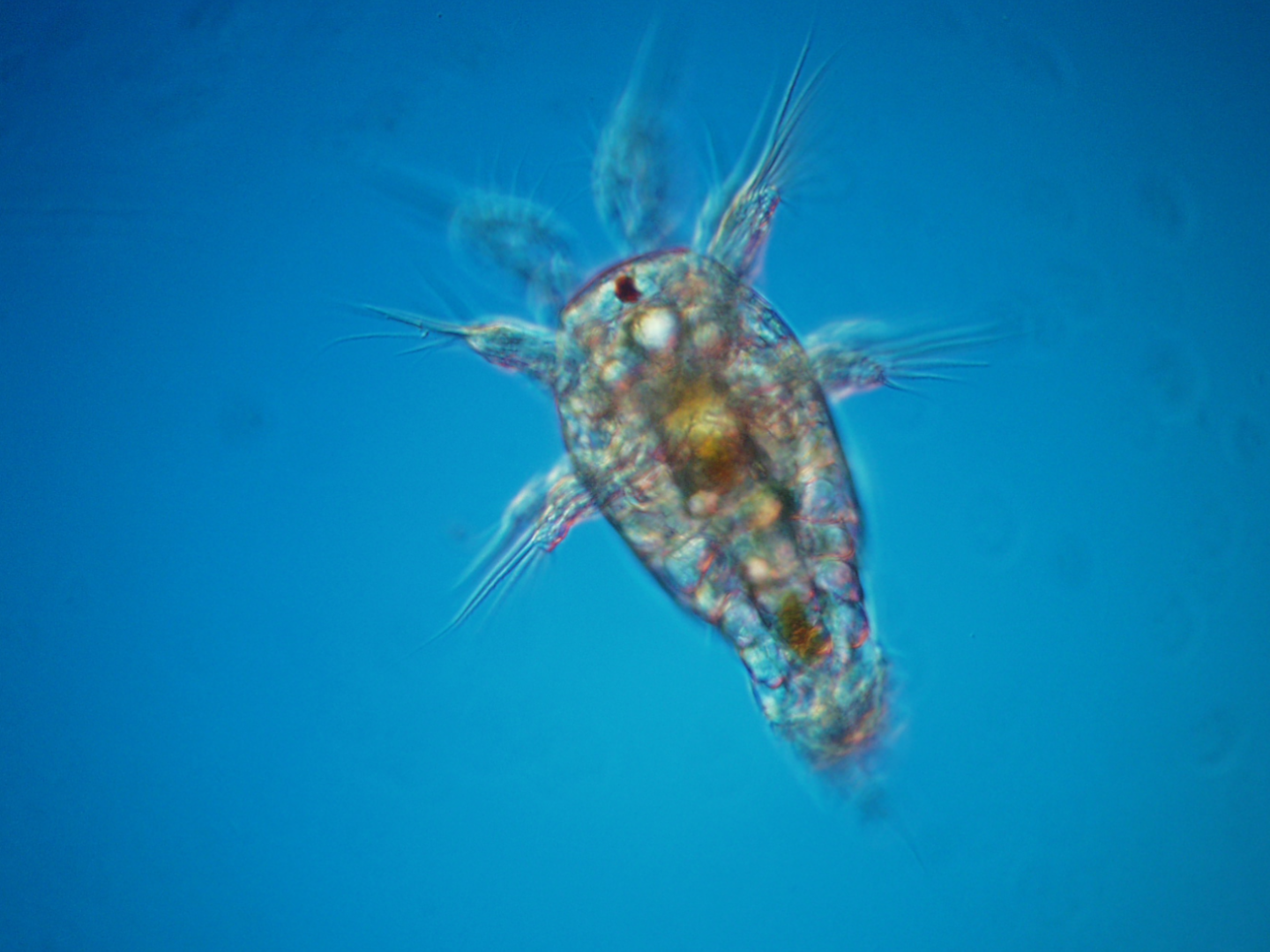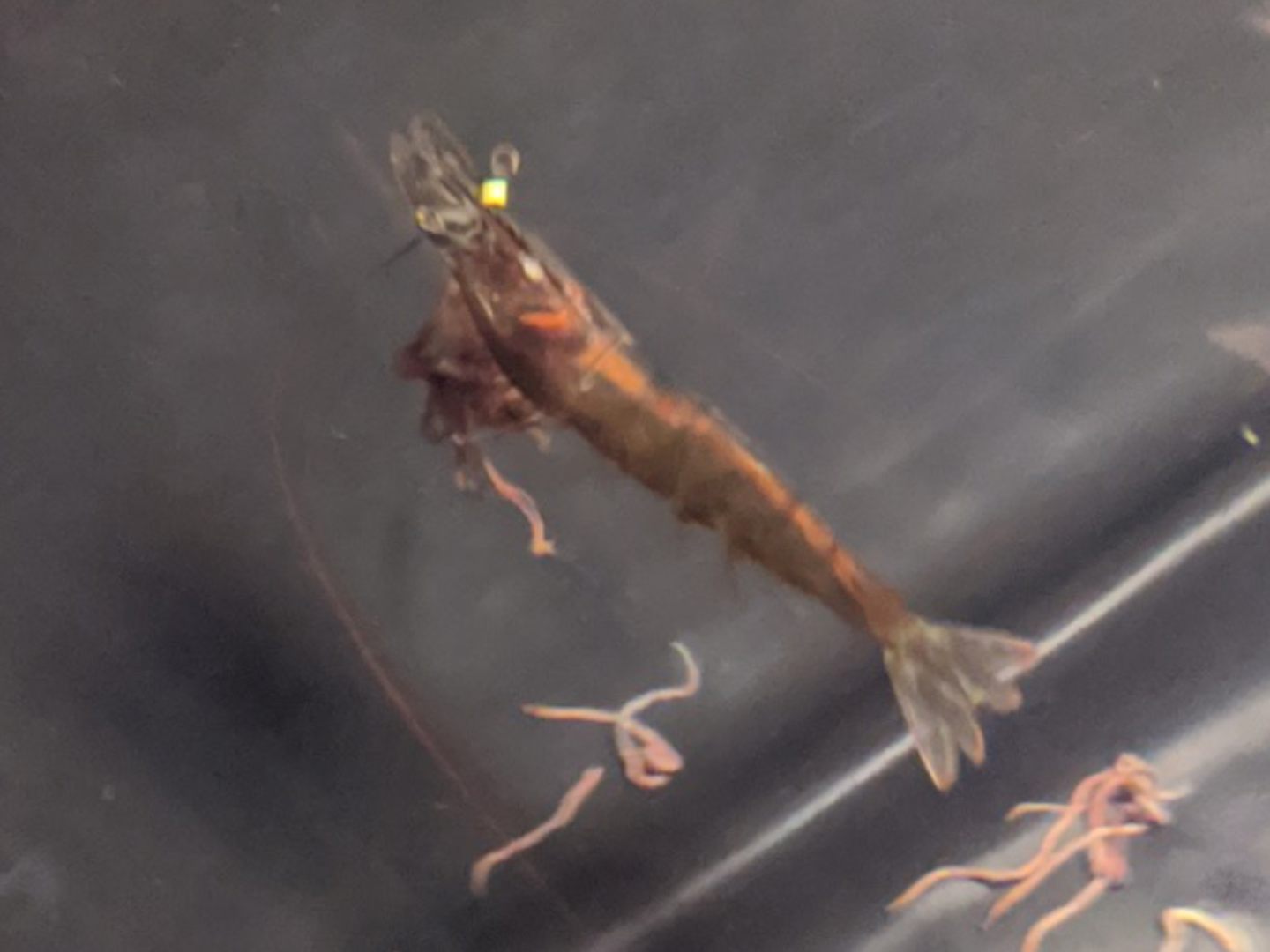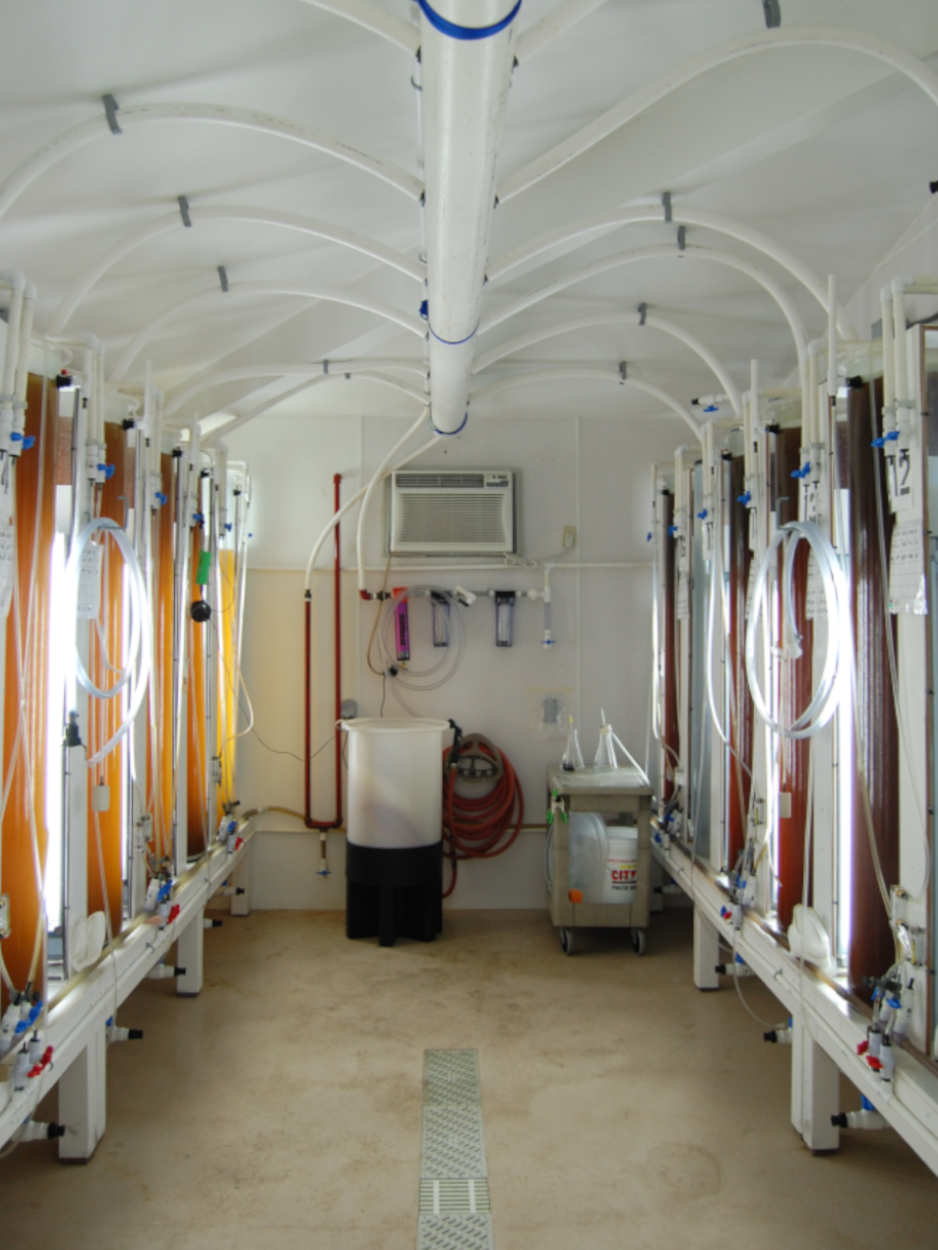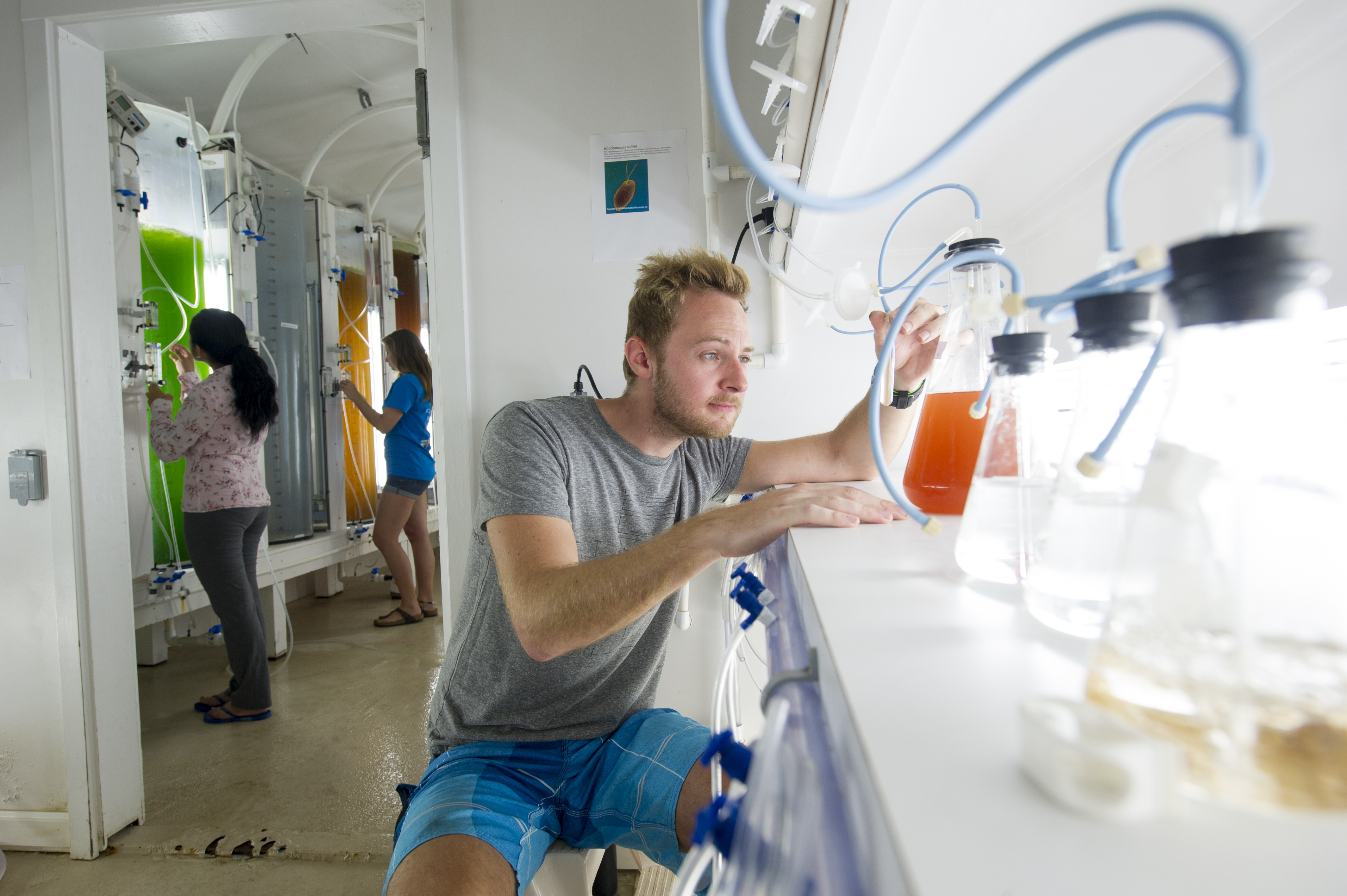

Female broodstock shrimp feasting on live, locally grown marine polychaete worms (Marphysa sanguinea). The orange-colored mass running the length of the shrimp are ovaries.
The culture of many marine organisms requires the use of live feeds during early larval stages, as well as during broodstock maturation for crustaceans such as shrimp. However, consistent and cost-effective production of high-quality live feeds (such as algae, rotifers, artemia, and copepods) at commercial scale represents a significant challenge to the aquaculture industry and has been a focus of OI research. Large-scale copepod production and the culture of marine polychaete worms are two examples of recent innovations at OI which could facilitate the emergence of new aquaculture business opportunities.
Scaling up copepod production helped catalyze the recent expansion of marine ornamental fish culture at OI, resulting in the commercial production of Yellow Tang. The use of live, locally grown marine polychaete worms could help support Hawaii’s shrimp broodstock industry by improving larval production and overall hatchery efficiency. In addition, the availability of live, local worms could eliminate the need to import expensive, frozen polychaetes, thereby lowering cost and mitigating the potential introduction of virulent shrimp pathogens into Hawaii.

Algae culture room at OI where single-celled algae are produced. Live algae are critically important food items for the larvae of many marine organisms

OI Researchers closely monitor algae cultures to ensure maximum quality and efficient production.
PARVOCALANUS CRASSIROSTRIS

The young (nauplius) stage of the calanoid copepod Parvocalanus crassirostris, an effective prey item for larval Yellow Tang and other coral reef fish.

